Co-Located Conference AgendasLiquid Biopsies and Minimally-Invasive Diagnostics 2017 | RNA-Seq, Single Cell Analysis & Single Molecule Analysis 2017 | 

Thursday, 5 October 201708:00 | Conference Registration, Materials Pick-Up, Morning Coffee and Pastries | |
Session Title: Opening Plenary Session -- Liquid Biopsies Status, circa 2017 |
| | 09:00 |  | Keynote Presentation Delivering on the Promise: Progress and Pitfalls Demonstrating the Value of Liquid Biopsies in Improving Cancer Care
Ellen Beasley, Senior Vice President, Genomic Health Inc, United States of America
Liquid biopsy products and applications have proliferated over the past several years, suggesting early enthusiasm for these non-invasive diagnostic tests was justified. A broad variety of technologies are now being applied to critical decision points across the patient journey. Early applications have focused on late stage cancer, when treatment selection is complex and tissue biopsy may be neither feasible nor representative. More recently, several treatment monitoring assays have also been released and the promise of liquid biopsy for cancer screening may be tantalizingly close. The impressive progress in the field of liquid biopsy is tempered by evolving standards of evidence to support physician adoption, guideline inclusion and reimbursement. I will review some of the emerging trends in the field, new product applications and the technical and commercial challenges that players will need to continue to manage. |
| 09:30 | 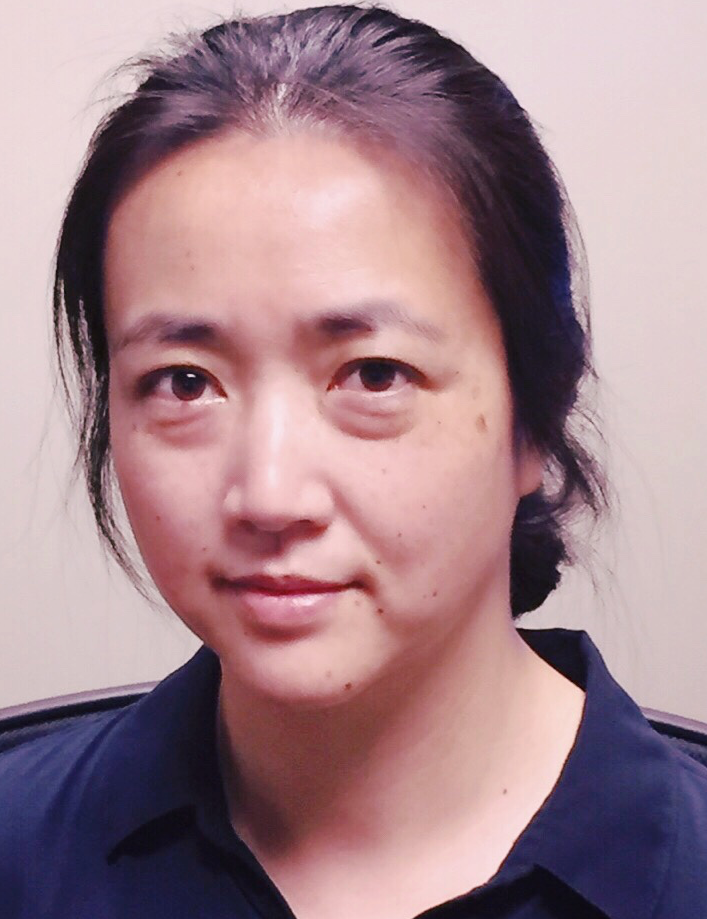 | Keynote Presentation Monitoring Disease Burden and Resistance to Targeted Therapy in Solid Tumors Using Liquid Biopsies
Janet Jin, Director of Assay Development, Roche Sequencing Solutions, United States of America
The potential of liquid biopsies for use in clinical research and patient management in oncology is of significant interest to clinicians as a complementary tool to tumor tissue testing. Next Generation Sequencing (NGS) technologies enable testing of multiple markers in one assay, overcoming the challenges of limited sample availability. Potential applications of NGS-based circulating tumor DNA (ctDNA) analysis include high-risk screening, surveillance, treatment prediction and monitoring for disease recurrence/resistance. Comprehensive testing of disease burden from ctDNA in plasma is currently used for clinical research. The AVENIO ctDNA Analysis Kits (For Research Use Only) offer researchers the option to sequence predictive markers, as well as highly mutated regions to assess disease burden and identifying resistance to targeted therapies in solid tumors. Our research demonstrates the potential utility for testing ctDNA to identify an increased risk of disease progression in colorectal cancer; and to identify resistance mechanisms to targeted therapy in lung cancer. Further clinical validation is required.
|
| 10:00 |  | Keynote Presentation New Tools for Liquid Biopsies to Enable Precision Medicine
Steve Soper, Foundation Distinguished Professor, Director, Center of BioModular Multi-Scale System for Precision Medicine, The University of Kansas, United States of America
Liquid biopsies are generating great interest within the medical community due to the simplicity for securing important biomarkers to manage complex diseases, such as many of the cancer-related diseases. Liquid biopsy markers can facilitate the realization of Precision Medicine in terms of assisting in the discovery of new patient-specific therapies and stratifying patients to match them to appropriate therapies. We are developing a suite of novel microfluidic devices that can process whole blood directly and designed to efficiently search for a variety of disease-associated liquid biopsy markers from divergent subpopulations comprising the tumor microenvironment. The microfluidic devices can isolate the target with recovery >90% and sufficient purity (>80%) to enable downstream molecular analysis. In this presentation, I will discuss the development of a fluidic system for monitoring minimum residual disease (MRD) in acute myeloid leukemia (AML) patients following allosteric stem cell transplantation to detect signs of relapse without requiring a bone marrow biopsy. Specifically, the peripheral blood of patients were tracked longitudinally for signs of relapse using circulating leukemia cells with relapse detected nearly 2 months prior to the standard of care, which required a bone marrow aspirate and multi-parameter flow cytometry. In addition, the staging of patients with multiple myeloma will be discussed via affinity selection of circulating plasma cells using peripheral blood samples with FISH carried out on the circulating plasma cells. |
| 10:30 | Coffee Break and Networking in the Exhibit Hall | 11:00 |  | Keynote Presentation The Diversity of Extracellular Vesicles – A Novel Platform for Liquid Biopsies
Jan Lötvall, Professor, University of Gothenburg; Founding President of ISEV; Editor-in-Chief, Journal of Extracellular Vesicles, Sweden
|
| 11:30 |  | Keynote Presentation Multiple Detection of Target DNAs and RNAs on a Microfluidic Platform
Sehyun Shin, Professor & Director, Nano-Biofluignostic Engineering Research Center, Korea University and Anam/Guro Hospital of Korea University, Korea South
|
| 12:00 | Networking Lunch in the Exhibit Hall, Meet Exhibitors and View Posters | |
Session Title: Technologies for Liquid Biopsy Development |
| | 13:00 | 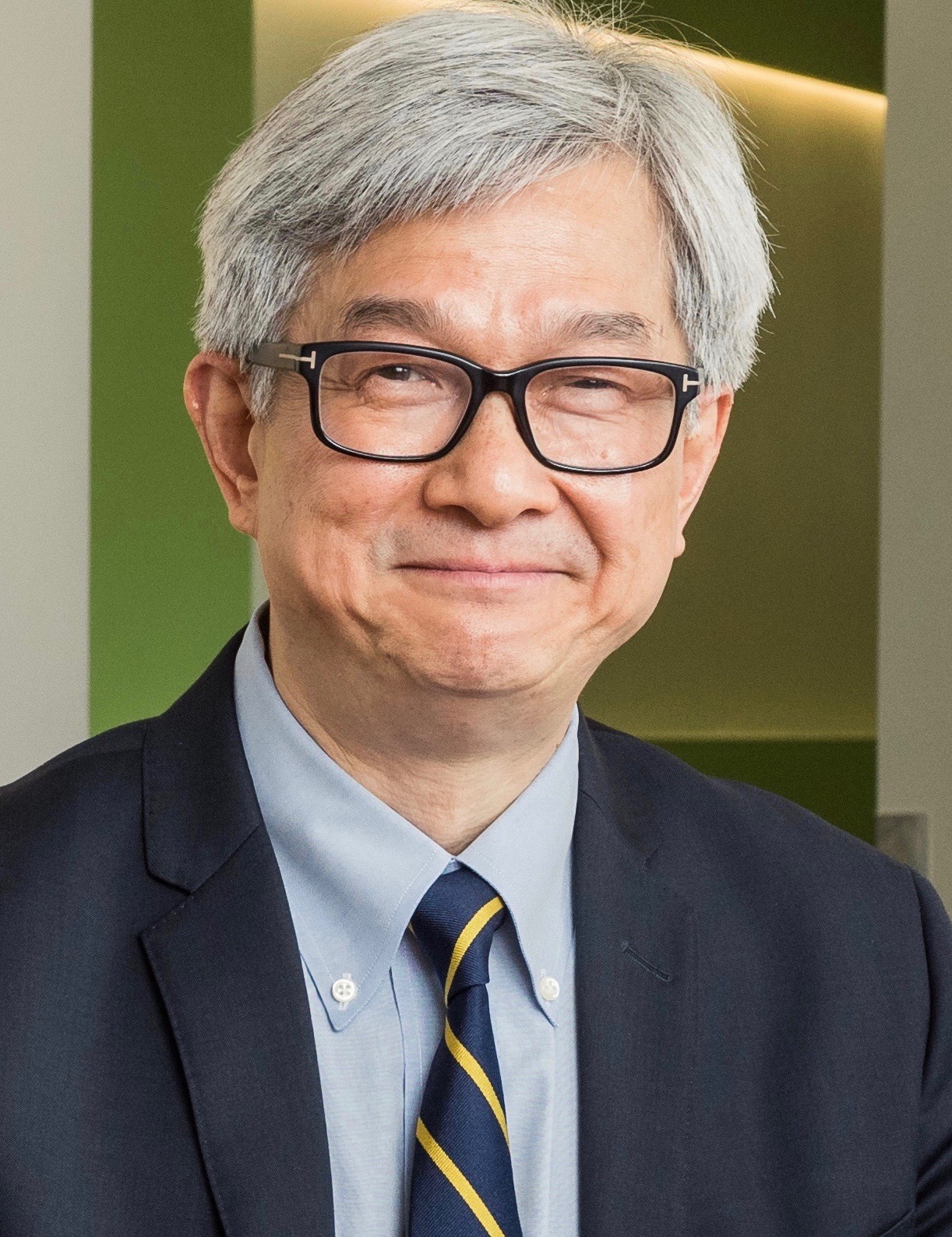 | Keynote Presentation EFIRM Liquid Biopsy (eLB)
David Wong, Felix and Mildred Yip Endowed Chair in Dentistry; Director for UCLA Center for Oral/Head & Neck Oncology Research, University of California-Los Angeles, United States of America
The advent of personalized medicine employing molecular targeted therapies has markedly changed the treatment of cancer in the past decade. Although tumor tissue biopsy-based genotyping is the current clinical practice for guiding clinical management, biopsy procedures can result in significant morbidity, limiting sampling to static snapshots which are further limited in scope by the inherent sampling bias of the analysis itself. To overcome these issues, technologies are needed for rapid, cost-effective, and noninvasive identification of biomarkers at various time points during the course of disease. Liquid biopsy is a rapidly emerging field to address this unmet clinical need as diagnostics based on cell-free circulating tumor DNA (ctDNA) can be a surrogate for the entire tumor genome. The use of ctDNA via liquid biopsy will facilitate analysis of tumor genomics that is urgently needed for molecular targeted therapy. Currently, most targeted approaches are based on PCR and/or next generation sequencing (NGS) for liquid biopsy applications with performance concordance in the 60-80% range with biopsy-based genotyping. We have developed a liquid biopsy technology “Electric Field Induced Release and Measurement (EFIRM)-Liquid Biopsy (eLB)” provides the most accurate detection that can assist clinical treatment decisions for the most common subtype of lung cancer, non-small cell lung cancer (NSCLC), with tyrosine kinase inhibitors (TKI) that can extend the disease progress free survival period of these patients. eLB requires only 40 µl of sample volume, no sample processing, reaction time is 15min and can be performed at the point-of-care or high throughput reference lab using plasma or saliva. eLB detects actionable EGFR mutations in NSCLC patients with >95% concordance with biopsy-based genotyping. eLB is minimally/ non-invasive detecting the most common EGFR gene mutations that are treatable with TKI such as Gefitinib or Erlotinib to effectively extend the progression free survival of lung cancer patients. |
| 13:30 | Droplet Biopsy: A New Approach for Capturing Circulating Tumor Cells based on Nanodevices
Balaji Panchapakesan, Professor, Department of Mechanical Engineering, Worcester Polytechnic Institute (WPI), United States of America
| 14:00 | Isolation of Cells from Undiluted Whole Blood Using Inertial Microfluidics
Ian Papautsky, Richard and Loan Hill Professor of Bioengineering, Co-Director, NSF Center for Advanced Design & Manufacturing of Integrated Microfluidics, University of Illinois at Chicago, United States of America
Inertial microfluidics is receiving considerable attention for applications in cell separation and liquid biopsy. However, while these devices have been widely explored for cell separation, sample dilution is necessary. Here, we report on a novel approach to achieve cell separation directly from unprocessed whole blood based solely on cell size. The separation is achieved through coupling of inertial effects with shear-induced diffusion. Our results from high-speed imaging reveal that focusing of larger cells near the channel centerline is possible, leading to easy separation. Whole blood spiked with fluorescently labeled beads and cells was used to demonstrate the separation principle and its performance without any sample pretreatment. Results confirm the high quality of performance in terms of efficiency (>90%) and RBC rejection rate (>96%). This work also successfully demonstrates the use of an inertial microfluidic device as a laboratory tool for sorting target cells from undiluted whole blood. | 14:30 | 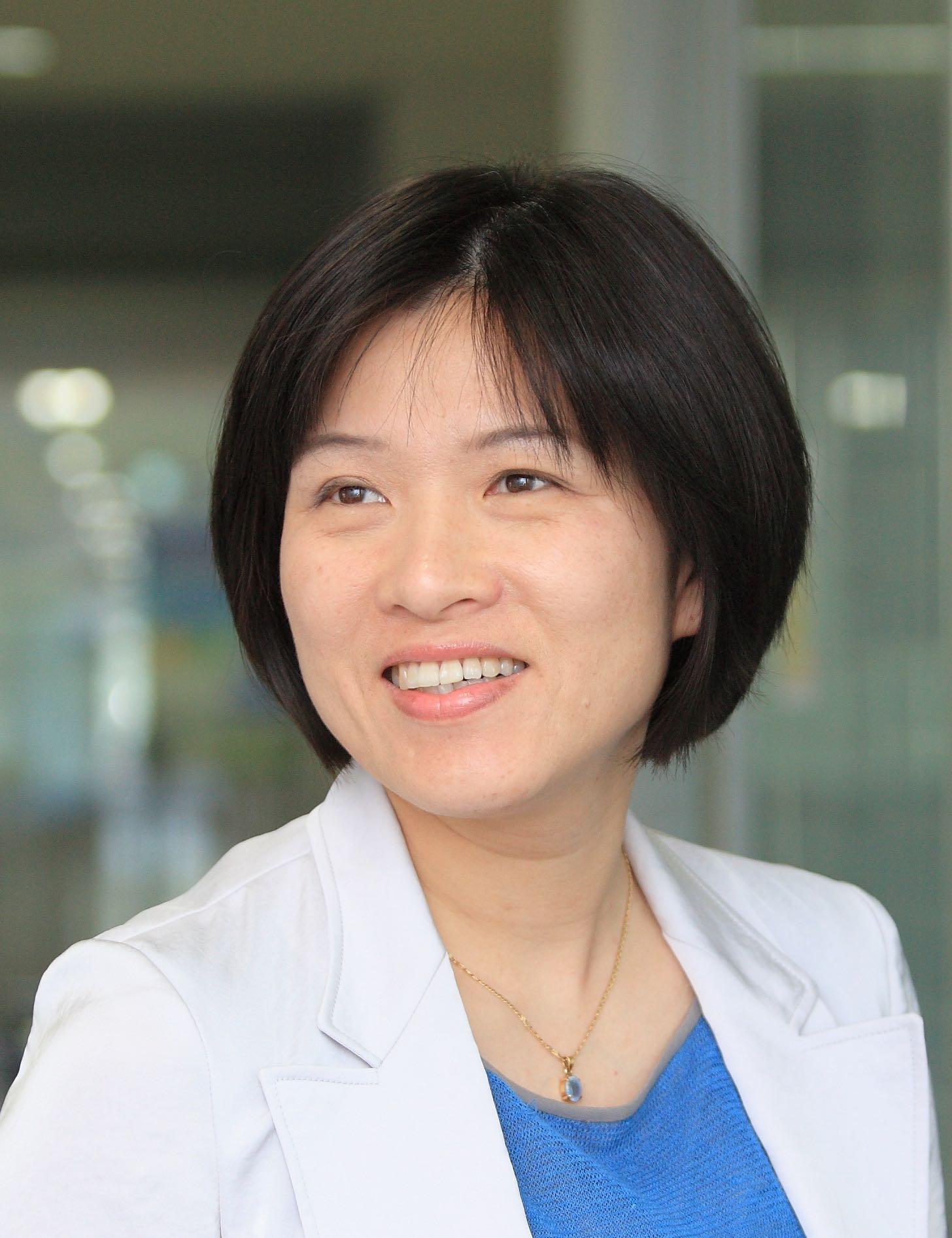 | Keynote Presentation Liquid Biopsy of Solid Tumors on a Spinning Disc
Yoon-Kyoung Cho, Professor, Biomedical Engineering, Ulsan National Institute of Science & Technology; Group leader, IBS; FRSC, Fellow of Royal Society of Chemistry, Korea South
In this presentation, our recent efforts on the liquid biopsy application for personalized cancer diagnostics will be discussed in detail. First, we will introduce the fluid-assisted separation technology (FAST), where the size-based separation event occurs not in conventional liquid-gas interface but in liquid-liquid interface stably prepared in a centrifugal microfluidic device. This provides ultrafast, uniform, clog-free, and highly efficient filtration with pressure drop much less than in conventional filtration. We used the FAST mechanism for enriching circulating tumor cells (CTCs) from whole blood without prior sample treatment and could achieve highly sensitive (>95.9% recovery), selective (~3.0 log depletion of white blood cells), rapid (< 3 mL/min), and label-free enumeration of rare CTCs. We demonstrate the clinical utility of the point-of-care detection of CTCs with samples taken from patients suffering from breast, stomach, or lung cancer. Next, we will present a rapid, label-free, and highly sensitive method for Extracellular vesicles (EVs) isolation and quantification using a lab-on-a-disc integrated with two nanofilters (Exodisc). Urinary EVs from bladder cancer patients could be automatically enriched within 30 min using a tabletop-sized centrifugal microfluidic system followed by molecular analysis or on-chip ELISA. We believe that this revolutionary method can contribute to accelerate the acceptance of CTC or EV-based cancer diagnostics as a standard practice in clinical settings. |
| 15:30 | Coffee Break and Networking in the Exhibit Hall | 16:00 |  | Keynote Presentation Diagnosis of Ischemic Heart Disease Using Plasma Extracellular Vesicles
Dominique PV de Kleijn, Professor Experimental Vascular Surgery, Professor Netherlands Heart Institute, University Medical Center Utrecht, The Netherlands, Netherlands
Cardiovascular Disease (CVD) is with the cardiovascular events of Ischemic Heart Disease and Stroke, the number 1 and 2 cause of death in the world and expect to increase especially in Asia. Ischemic heart disease (IHD) comprises 3 entities: stable coronary artery disease (SCAD), unstable angina (UA) and myocardial infarction (MI). Because IHD is associated with an increased risk of adverse clinical events such as heart failure and death, early recognition of IHD is of utmost importance. However, to diagnose IHD is challenging, as many patients present with atypical symptoms. It is known that women have a different symptom sensation than men. Troponins are the main diagnostic tool for detection of MI. Blood biomarkers for SCAD (typically causing stable angina) and UA, however, are not available. These diagnoses frequently require hospital visits/admissions for time-consuming and costly (non)invasive tests. We show that the plasma extracellular vesicle content can be used as an accurate source for early diagnosis of SCAD and UA. |
| 16:30 | Low Coverage, Genome-Wide Sequencing of Cell-free DNA Enables the Monitoring of Response to Immunotherapy in Cancer Patients
Taylor Jensen, Director, Research and Development, Sequenom (a LabCorp Company), United States of America
Inhibitors of the PD-1/PD-L1/CTLA4 immune checkpoint pathway have revolutionized cancer treatment with a subset of patients showing durable responses; however, challenges remain in the development of biomarkers to predict or monitor response to these therapies. The use of cell-free DNA (cfDNA) isolated from plasma, or liquid biopsy, provides a promising method for monitoring response. In contrast to methods that use ultra-deep (>30,000X) targeted sequencing, we will describe a recently completed a proof-of-concept study using low-coverage (~0.3X), genome-wide sequencing of cfDNA to detect tumor-specific copy number alterations. As part of this study, we have developed a novel metric, the Genome Instability Number (GIN), to monitor response to these drugs throughout treatment. In a series of case studies, we will describe how the GIN can be used to discriminate clinical response from progression, differentiate progression from pseudoprogression and identify hyperprogressive disease. In addition, we have utilized this metric to provide evidence for a delayed pharmacokinetic response for checkpoint inhibitors relative to targeted therapies.
| 17:00 | 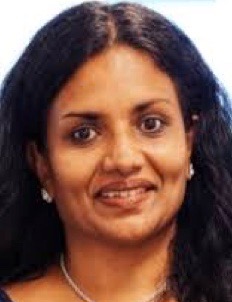 | Keynote Presentation Can Precision Medicine be Used in Treating Head and Neck Cancer Patients?
Chamindie Punyadeera, Associate Professor, Institute of Health and Biomedical Innovation, Queensland University of Technology, Australia
Metastasis in head and neck cancer (HNC) patients is reflected by measurable levels of circulating tumour cells (CTCs) in the peripheral blood of these patients. CTCs represent cancer cells from the primary and metastatic sites, thereby providing a comprehensive representation of the tumour burden of an individual patient. For patients without CTCs at presentation, the detection of CTCs in the blood and analysis of biomarkers within them, provide an opportunity to identify patients ‘at-risk’ of developing overt metastasis, accelerating targeted treatment in addition to tailoring routing care with an aim of improving cure.
Our study aimed to assess whether CTCs isolated from bloods collected from HNC patients (n=150) could provide early evidence of distant metastases. With significant advances in CTC isolation technologies, we could demonstrate a higher CTC capture efficiency (70% vs 25%) using epitope-independent platforms. By assessment of single and clustered CTCs, our data showed that HNC patients can be identified 4-6 months prior to developing clinical/radiographically evident metastasis. In these patients, a window for treatment escalation could become a possibility. In a proof of concept study, using novel culture formulations and hypoxic conditions (1-2% O2), we were able to demonstrate, for the first time, short-term patient derived CTC cultures ex vivo from 7/18 HNC samples (4/7 HPV-positive, oropharyngeal) in a clinically relevant time period. Expanding CTCs outside the patient’s body allows for the recapitulation of the molecular diversity present within the tumour, understanding the disease progression and testing of therapies. Recent advancements have shown that PD-1 immune checkpoint therapies have durable responses in metastatic HNC patients who fail 1st and 2nd line therapies. Our preliminary data suggests PD-L1 is frequently expressed on HNC CTCs, and an immunoscore may be able to stratify patients likely to respond to immunotherapy paving the way towards precision medicine. |
| 17:30 | 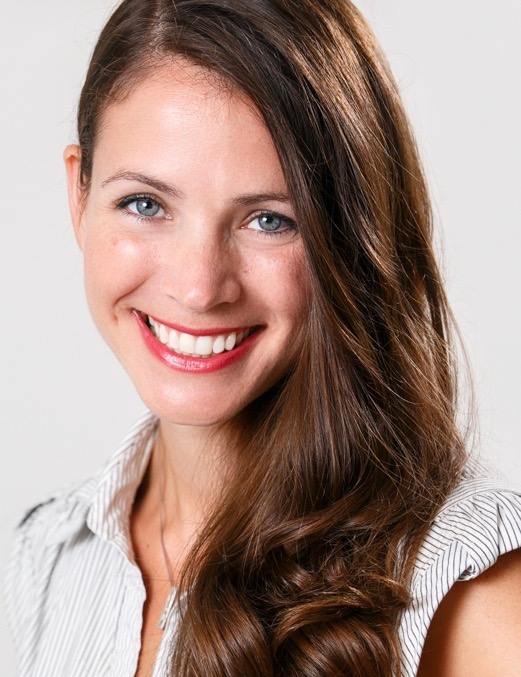 | Keynote Presentation Considering the Role of NGS in the Clinic
Allison Ballmer, International Business Leader, Roche Molecular Systems, Inc., United States of America
Exploring the deployment of NGS in a clinical context: addressing the current status and considering the future trajectory. |
| 18:00 | Networking Cocktail Reception with Beer, Wine and Appetizers. Engage with Colleagues and Discuss Collaborations and Partnerships | 19:30 | Close of Day 1 of the Conference |
Friday, 6 October 201707:00 | Morning Coffee, Breakfast Pastries, and Networking in the Exhibit Hall | 08:00 | 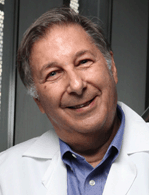 | Keynote Presentation Scientific Lecture: SuperSelective Primers for Multiplex Real-time PCR Assays that Assess the Abundance of Rare Mutations Associated with Cancer
Fred Kramer, Professor, New Jersey Medical School Rutgers University, United States of America
PCR assays are the most rapid, most sensitive, and least expensive way to assess the abundance of mutant DNA fragments present in liquid biopsies. “SuperSelective” PCR primers, due to their unique design, are extraordinarily specific, able to selectively initiate the synthesis of amplicons on ten mutant DNA fragments in the presence of 1,000,000 wild-type DNA fragments (even though the only difference between the mutant and the wild type is a single-nucleotide polymorphism). Sets of SuperSelective primers, each possessing unique 5’-tag sequences, enable the amplicons generated from each mutant to be distinguished by differently colored molecular beacon probes. The inclusion of primers for a wild-type reference gene fragment, enables the abundance of each type of mutant DNA fragment to be assessed by determining the difference between its threshold value and the threshold value of the reference gene. |
| |
Session Title: The Various Classes of Circulating Biomarkers and Their Deployment in Liquid Biopsy Development |
| | 09:00 | _150x75.jpg) Technology Spotlight: Technology Spotlight:
Biospecimens for Biomarker Research: How to Work with your Biorepository to get the Specimens you Need
Larry Blocher, Chief Executive Officer, Bio-Options, Inc.
Quality biospecimens from the right donor are essential for biomarker research. The quality of your research is directly related to the quality of your biospecimen. As the saying goes, "garbage in - garbage out." I will discuss how a commercial biorepository obtains and distributes biospecimens. You will understand the differences on how different entities collect biospecimens and identify donors and how that may affect your research. I will also discuss how to best work with your biospecimen provider, what questions to ask and what information you need to provide.
| 09:30 |  Technology Spotlight: Technology Spotlight:
Delivering on the Promise of Liquid Biopsy
Arturo Ramirez, Senior Scientist, RareCyte, Inc.
In brief, the promise of liquid biopsy is that non-invasive blood sampling can provide the depth of data necessary for 21st century clinical investigation and patient care. In this presentation, Dr. Ramirez will discuss the history and current achievements of liquid biopsy as a valuable prognostic tool for cancer. He will also outline a path forward to developing the next generation of liquid biopsy tools that will not only greatly enhance our ability to diagnose cancer and allow us to design highly individualized treatments, but also will open up entirely new opportunities for pre-natal diagnosis, diagnosis of infectious diseases, and other important applications.
| 10:00 | 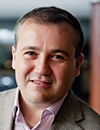 | Keynote Presentation Chemistry-Free Microfluidic Technologies to Sort Cells for Health and Disease
Utkan Demirci, Professor, Stanford University School of Medicine, United States of America
Micro- and nano-scale technologies can have a significant impact on medicine and biology in the areas of cell manipulation, diagnostics and monitoring. At the convergence of these new technologies and biology, we research for enabling solutions to the real world problems at the clinic. Emerging nano-scale and microfluidic technologies integrated with biology offer innovative possibilities for creating intelligent, mobile medical lab-chip devices that could transform diagnostics and monitoring, tissue engineering and regenerative medicine. In this talk, first, we will present an overview of our laboratory's work in these areas focused on applications in magnetic levitation methods for assembling cells and chemistry free sorting of rare cells from whole blood. Cells consist of micro- and nano-scale components and materials that contribute to their fundamental magnetic and density signatures. Previous studies have claimed that magnetic levitation can only be used to measure density signatures of non-living materials. Here, we demonstrate that both eukaryotic and prokaryotic cells can be levitated and that each cell has a unique levitation profile. Furthermore, our levitation platform uniquely enables ultrasensitive density measurements, imaging, and profiling of cells in real-time at single-cell resolution. This method has broad applications, such as the label-free identification and sorting of CTCs and CTM with broad applications in drug screening in personalized medicine. Second, we will present technologies to sort sperm cells for IVF and IUI applications using microfluidics without any labels or chemistry. I will also share some of the clinical implications of these technologies indicating the broad potential that chemistry-free and label-free microfluidic-based technologies have in medicine. |
| 10:30 |  | Keynote Presentation Magnetic Ranking Cytometry: A New Tool for Liquid Biopsy and Subtyping of Rare Cells
Shana Kelley, Professor, University of Toronto, Canada
The heterogeneity and diverse phenotypes circulating tumor cells makes the analysis of these markers for liquid biopsy a challenge. We have developed a new technique, magnetic ranking cytometry, that is able to separate CTCs based on phenotypic and genotypic properties. In a single measurement, CTCs can be separated and classified according to protein expression, gene expression, or functional properties like chemotaxis. |
| 11:00 | Redefining Circulating Tumor Cells and Enabling Liquid Biopsy. Biological and Clinical Advances Arising from the Merger of the CELLSEARCH® and DEPArray™ Technologies
Steven Gross, Head of CellSearch Assay Development, Menarini Silicon Biosystems, Inc., United States of America
The prognostic power of Circulating Tumor Cells (CTC) measured using CELLSEARCH®, is arguably the most reproducible and independently verified finding in the field of CTC analysis. Evidence of different CTC populations with different clinical implications will be presented. The recent purchase of CellSearch by Menarini Silicon Biosystems serves to combine two of the most powerful automated cellular analysis platforms in the field of liquid biopsy. This combination is shedding new light on tumor heterogeneity, and its monitoring, using blood samples. It has also enabled purification of tumor cells from tissue samples of low tumor cellularity to enable CNV and NGS analysis on samples previously impossible to study. This could lead to faster outcome studies through use of banked FFPE tissue. The use of DEPArray to do complete molecular analysis on individual, or populations, of CTCs with 100% purity is now giving rise to unprecedented understanding of CTC heterogeneity, emerging CTC phenotypes, and exciting new prospects for researchers and clinicians. | 11:30 | Circulating RNA and its Applications
Kai Wang, Principal Scientist, Institute for Systems Biology, United States of America
Due to their potential diagnostic applications, circulating RNA has gained significant interest in recent years. Despite the potential, it is still a challenge to accurately profile and measure RNA in circulation. In the past few years, a number of improvements have been made, especially on next generation sequencing-based small RNA analysis. These advances may provide the foundation of moving this promising field forward. | 12:00 | Continuous Bio-manufacturing of Extracellular Vesicle Reference Materials
William Whitford, Strategic Solutions Leader, GE Healthcare, United States of America
Interest in microvesicles, exosomes and oncosomes is growing. Applications include 1) vectors of research or therapeutic cargo, 2) agents of intercellular communication from stems cells to terminally differentiated tissue to the entire microbiome and 3) support of clinical diagnostics. There are ongoing efforts to standardize clinically applied vesicle assays and therapeutic cargo vehicles. Reference materials, controls, and performance standards need to be defined for quality assurance in such applications. Certified reference materials (such as from the NIST or ATCC) and secondary materials may need to be generated for CLEA regulated diagnostic or therapeutic activities. Sponsors often have their choice of cell platforms, production formats and culture modes for vesicle product and process development. However, commercial success can be dependent upon the discovery of scalable technologies that can produce very large amounts of sufficiently pure vesicles in a robust, compliant and cost-effective manner in a cGMP environment. In biopharmaceuticals, continuous biomanufacturing promises heightened process flexibility and a reduction in product microheterogeneity; construction costs and schedule extent; utilities requirement; manufacturing suite area and classification. The value of single-use implemented continuous biomanufacturing with chemically defined animal product-free materials will be reviewed. | 12:30 | Networking Lunch in the Exhibit Hall, Meet Exhibitors and View Posters | |
Session Title: The Ecosystem Enabling Liquid Biopsy Development |
| | 13:30 |  | Keynote Presentation NanoVelcro Assays for Detection and Characterization of Circulating Tumor Cells
Hsian-Rong Tseng, Professor, Crump Institute for Molecular Imaging, California NanoSystems Institute, University of California-Los Angeles, United States of America
Circulating tumor cell (CTC) is regarded as a liquid biopsy of tumor, allowing non-invasive, repetitive, and systemic sampling of disease. Although detecting and enumerating CTCs is of prognostic significance in metastatic cancer, it is conceivable that performing molecular and functional characterization on CTCs will reveal unprecedented insight into the pathogenic mechanisms driving lethal disease. Nanomaterial-embedded cancer diagnostic platforms, i.e., NanoVelcro CTC Assays represent a unique rare-cell sorting method that enables detection, isolation, and characterization of CTCs in peripheral blood, providing an opportunity to noninvasively monitor disease progression in individual cancer patients. Over the past decade, a series of NanoVelcro CTC Assays has been demonstrated for exploring the full potential of CTCs as a clinical biomarker, including CTC enumeration, phenotyping, genotyping and expression profiling. In this presentation, Professor Tseng will briefly introduce the development of multiple generations of NanoVelcro CTC Assays, and highlight the clinical applications of each generation for various types of solid tumors, including prostate cancer, pancreatic cancer, lung cancer, kidney cancer, liver cancer, and melanoma. Prof. Tseng’s research team at UCLA is honored to contribute to the White House Cancer Moonshot program, in pursuit of accelerating blood profiling diagnostic technologies for the benefit of patient quality of life. Under Prof. Tseng’s leadership, his team has been seeking for research and clinical partners world-wide in order to further broaden the impact of NanoVelcro CTC Assays. |
| 14:00 | 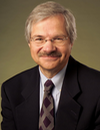 | Keynote Presentation Donor-Derived Cell-Free DNA: An Accurate, Precise, and Dynamic Biomarker for Improved Management of Solid Organ Transplant Patients
John Sninsky, Chief Scientific Officer, CareDx, United States of America
Cell-free DNA (cfDNA) has been described as a biomarker for prenatal testing, cancer, and organ transplantation, each of which present different clinical and technological challenges. cfDNA circulating in the plasma of transplant recipients represents a mixture of recipient cfDNA and residual nucleosome-protected genomic regions released from dying cells of the allograft (“transgenome”). The genomes of the organ donor and allograft recipient are distinguishable by sequencing total cfDNA from the plasma. A clinical-grade cfDNA NextGen sequencing (NGS) assay was developed to monitor the levels of the “transgenome”, enabling assessment of the allograft status of transplant recipients with high confidence analytical validation. The NGS-based assay does not require testing of genetic material from the donor or recipient thereby simplifying the testing of transplants with cadaveric donors. Longitudinal samples from heart, lung and kidney transplant patients had higher dd-cfDNA levels at biopsy-confirmed rejection which were reduced following adjustments to immunosuppressive therapy in clinical validation studies. Serial assessment of dd cfDNA provides a measure of both the amount and kinetics of dying allograft cells, information clinicians may use to inform clinical utility. |
| 14:30 | 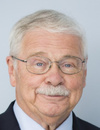 | Keynote Presentation Cell Free DNA and Exosome Biomarkers for Liquid Biopsy Cancer Diagnostics and Early Cancer Detection
Michael Heller, Professor, Dept Bioengineering, University of California-San Diego, United States of America
Cell free (cf) DNA and exosomal RNA and proteins are now accepted as important biomarkers for liquid biopsy cancer diagnostics, and may also be used for early cancer detection. Nevertheless, the isolation of these biomarkers from patient samples requires relatively complex, time consuming and expensive procedures which greatly limits their practical use for most cancer diagnostic applications. New AC electrokinetic (ACE) microarray/chip devices (Biological Dynamics, La Jolla, CA) now allow 15-20-minute isolation of cancer related cf-DNA, exosomal RNA and protein biomarkers from 20-50ul of blood, plasma or serum. After isolation of the biomarkers, specific fluorescent dyes can be used first to simultaneously detect the different biomarker levels directly on the chip (in-situ). In a subsequent step, immunofluorescent analysis can be carried out to identify specific protein biomarkers on the exosomes. Finally, the cf-DNA and RNA (mRNAs and miRNAs release from the exosomes) can be eluted from the DEP chip, and PCR and sequencing analysis carried out to identify the cancer-related point mutations and other polymorphisms, as well as to further verify the tissue origin of the biomarkers. For glioblastoma exosomes isolated from plasma, exosome-specific surface and interior proteins CD63 and TSG101 could be detected by immuno-fluorescence, and mutated EGFRvlll mRNA was detected by RT-PCR. Exosomal related protein biomarker Glypican-1 could be isolated from pancreatic cancer patient plasma samples by ACE and then detected on-chip by immunofluorescence, and Kras mutations detected in the eluted cf-DNA. Similar results are being obtained for prostate, breast, lung and brain cancer, as well as for TBI patient samples. Thus, ACE technology represents a powerful new minimally invasive technology for cancer diagnostics that is particularly well suited for the rapid isolation of cell free nucleic acid and exosome biomarkers. The technology is setting the stage for seamless sample to answer liquid biopsy, cancer patient therapy monitoring and ultimately for early disease detection. |
| 15:00 | Nano Analytical Tools for Extracellular Vesicles
Shivani Sharma, Associate Director, California NanoSystems Institute, California NanoSystems Institute, UCLA, United States of America
The analysis of exosomes and other extracellular vesicles (EVs) in body fluids could in future be the standard diagnostics in medicine, with growing evidence that the size, number concentration and biological composition of EVs are influenced by disease-including cancer, neurodegenerative diseases, and other anomalies and thus comprise of clinically relevant information. However the best utilization of this information warrants standardization of EVs for any downstream diagnostic analysis. I will discuss the application and impact of key EV metrology tools including Atomic Force Microscopy and Force Spectroscopy as well as recent findings in brain, breast and prostate cancer cell models. | 16:00 | Clinical implications of genomic variants identified in over 30,000 advanced-stage cancer patients by next-generation sequencing of circulating tumor DNA
AmirAli Talasaz, Co-Founder, President & COO, Guardant Health, United States of America
Next-generation sequencing (NGS) of circulating tumor DNA (ctDNA) enables non-invasive profiling of solid tumor cancers. Over the past few years, research and clinical practice guidelines have highlighted a role for liquid biopsy in patient care. In addition, liquid biopsies are becoming essential for successful patient enrollment in clinical trials, where tissue access and high rate of failures have been limiting factors slowing enrollment. In this talk, we characterize somatic genomic profiles derived from over 35,000 plasma samples from advanced cancer patients as were determined by a ctDNA NGS test targeting up to 73 genes (Guardant360®). Accuracy of ctDNA-detected driver alterations (PPV) was assessed by comparing to available matched tissue tests for 646 patients (lung, colon, and other cancer types). A pooled response rate analysis was performed across 11 published/pre-press datasets analyzing response to Guardant360®-directed therapy. Use of liquid biopsies is increasing in clinical care, providing an option of obtaining genomic information non-invasively. This dataset, derived from liquid biopsy use in clinical practice, highlights the clinical impact of identifying alterations that are targetable by drugs with regulatory approval, including emergent resistance alterations, as well as novel targets.
| 16:30 | Drug Pharmacodynamics in Clinical Trials by CTC Monitoring
Robert Kinders, Sr. Principal Scientist and Head, Laboratory of Human Toxicology and Pharmacology, Frederick National Laboratory for Cancer Research, United States of America
The drug class being explored are nucleoside analogs being developed in the NCI NExT program. The presentation will also include some data on changes in CTC phenotype, including EMT, during the course of therapy. | 17:00 | Close of Day 2 of the Conference |
|


 Add to Calendar ▼2017-10-05 00:00:002017-10-06 00:00:00Europe/LondonLiquid Biopsies and Minimally-Invasive Diagnostics 2017Liquid Biopsies and Minimally-Invasive Diagnostics 2017 in Coronado Island, CaliforniaCoronado Island, CaliforniaSELECTBIOenquiries@selectbiosciences.com
Add to Calendar ▼2017-10-05 00:00:002017-10-06 00:00:00Europe/LondonLiquid Biopsies and Minimally-Invasive Diagnostics 2017Liquid Biopsies and Minimally-Invasive Diagnostics 2017 in Coronado Island, CaliforniaCoronado Island, CaliforniaSELECTBIOenquiries@selectbiosciences.com